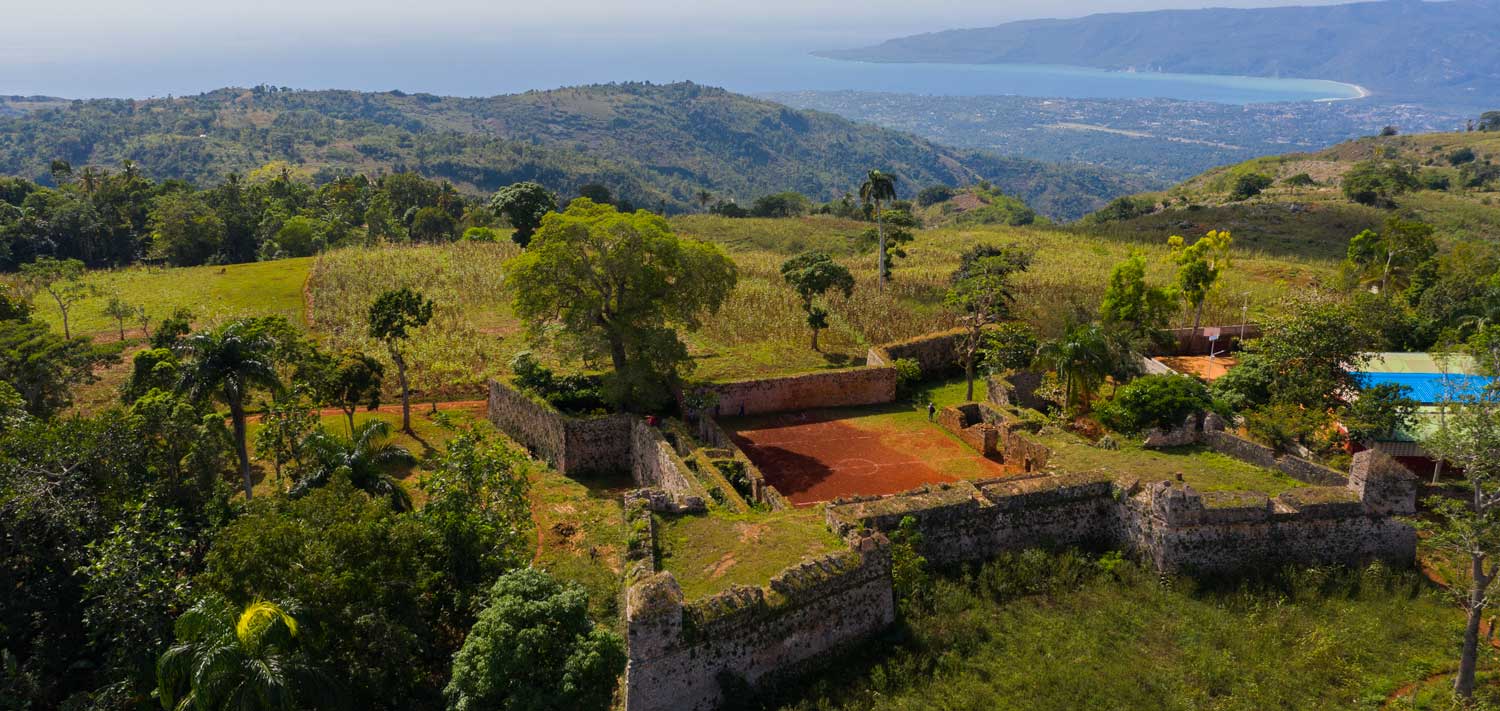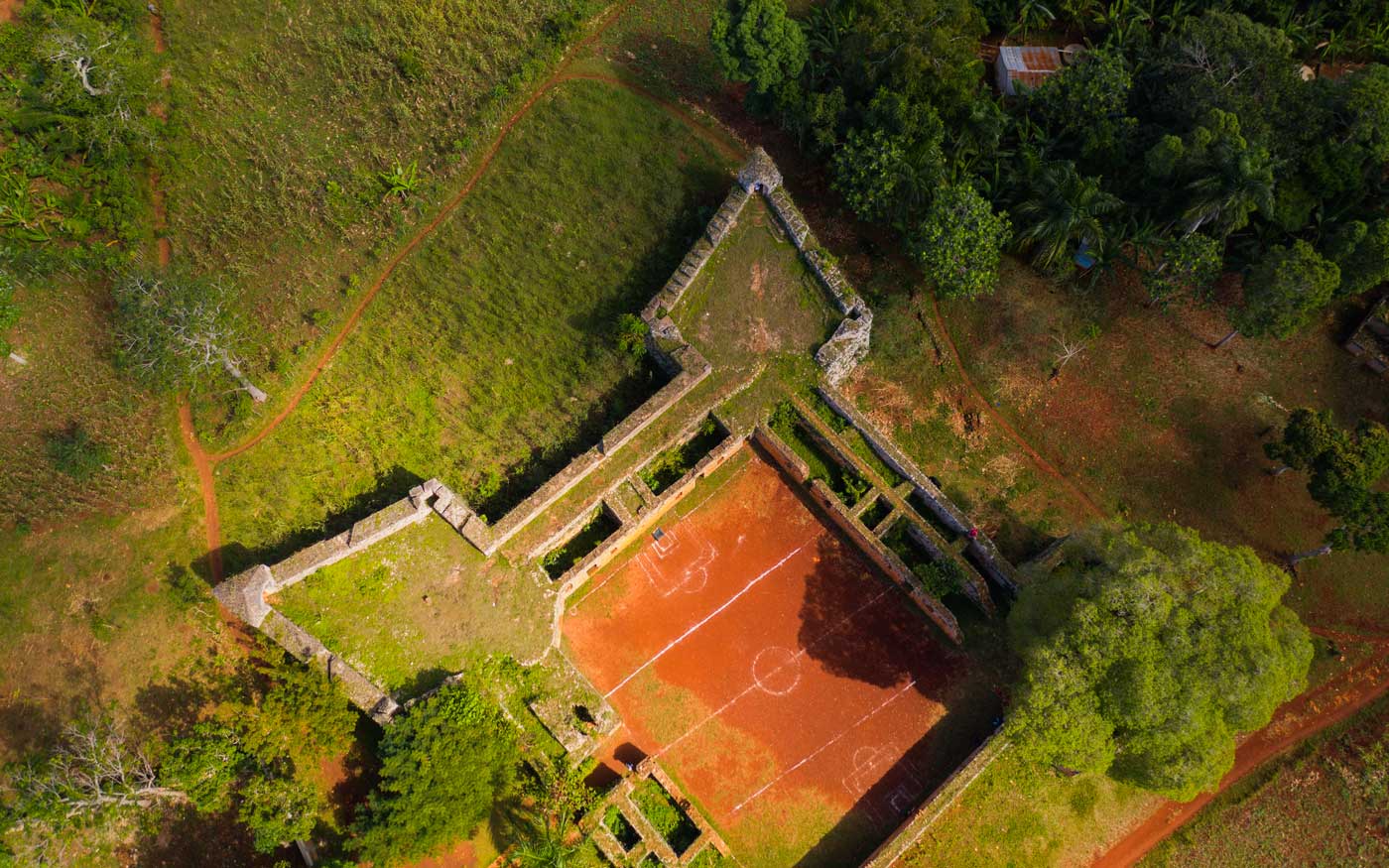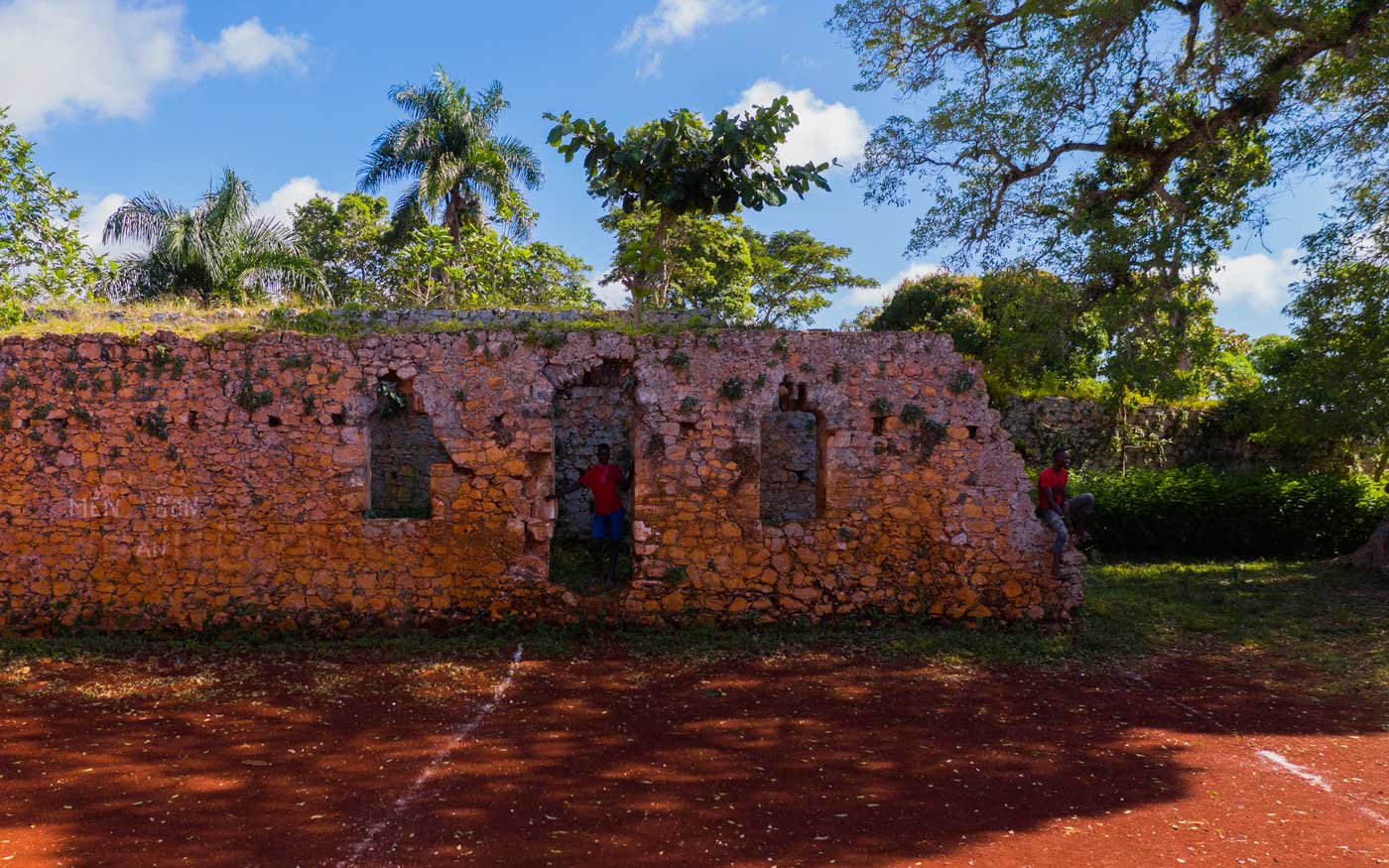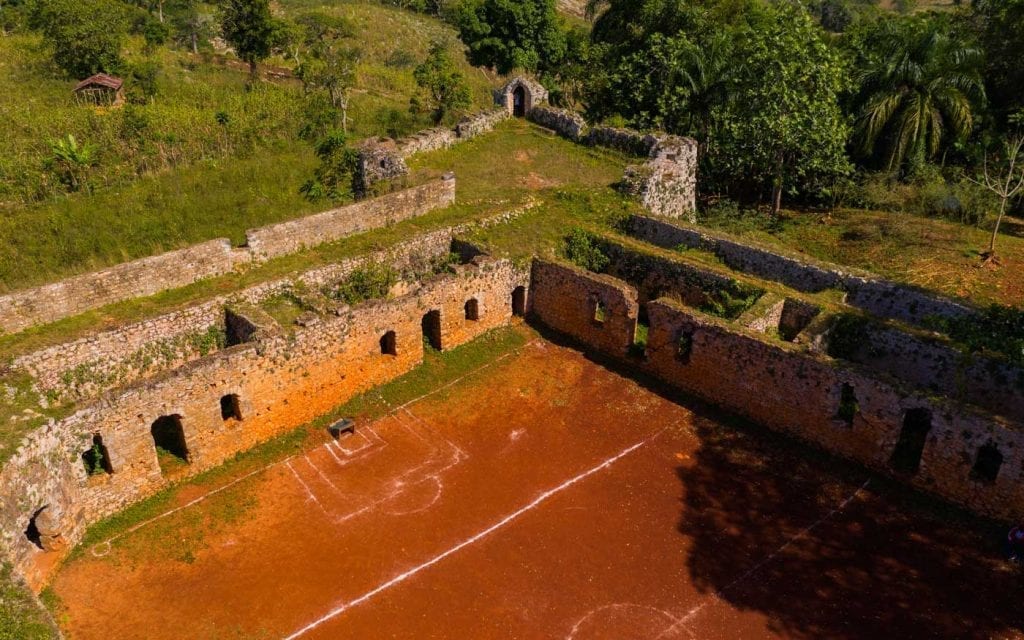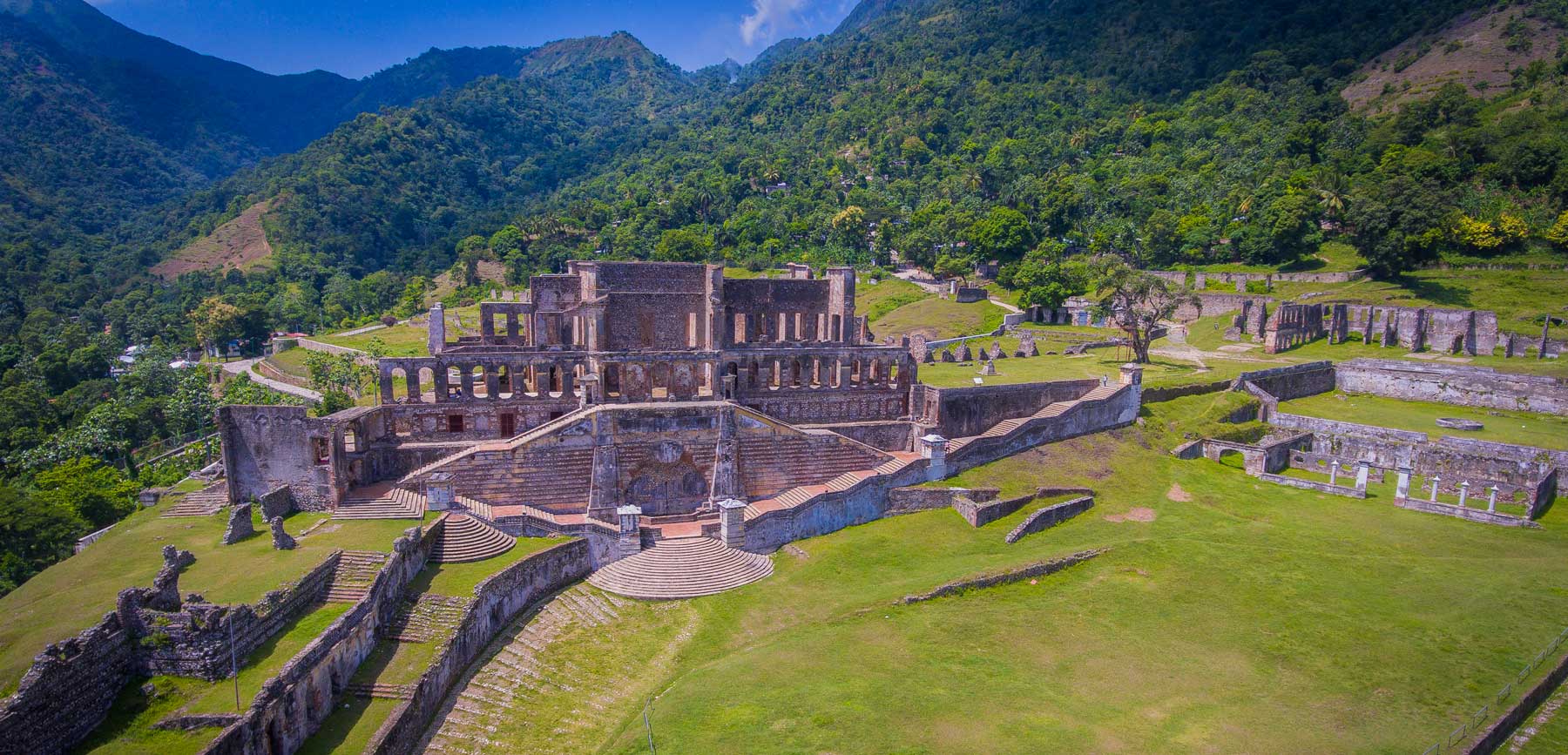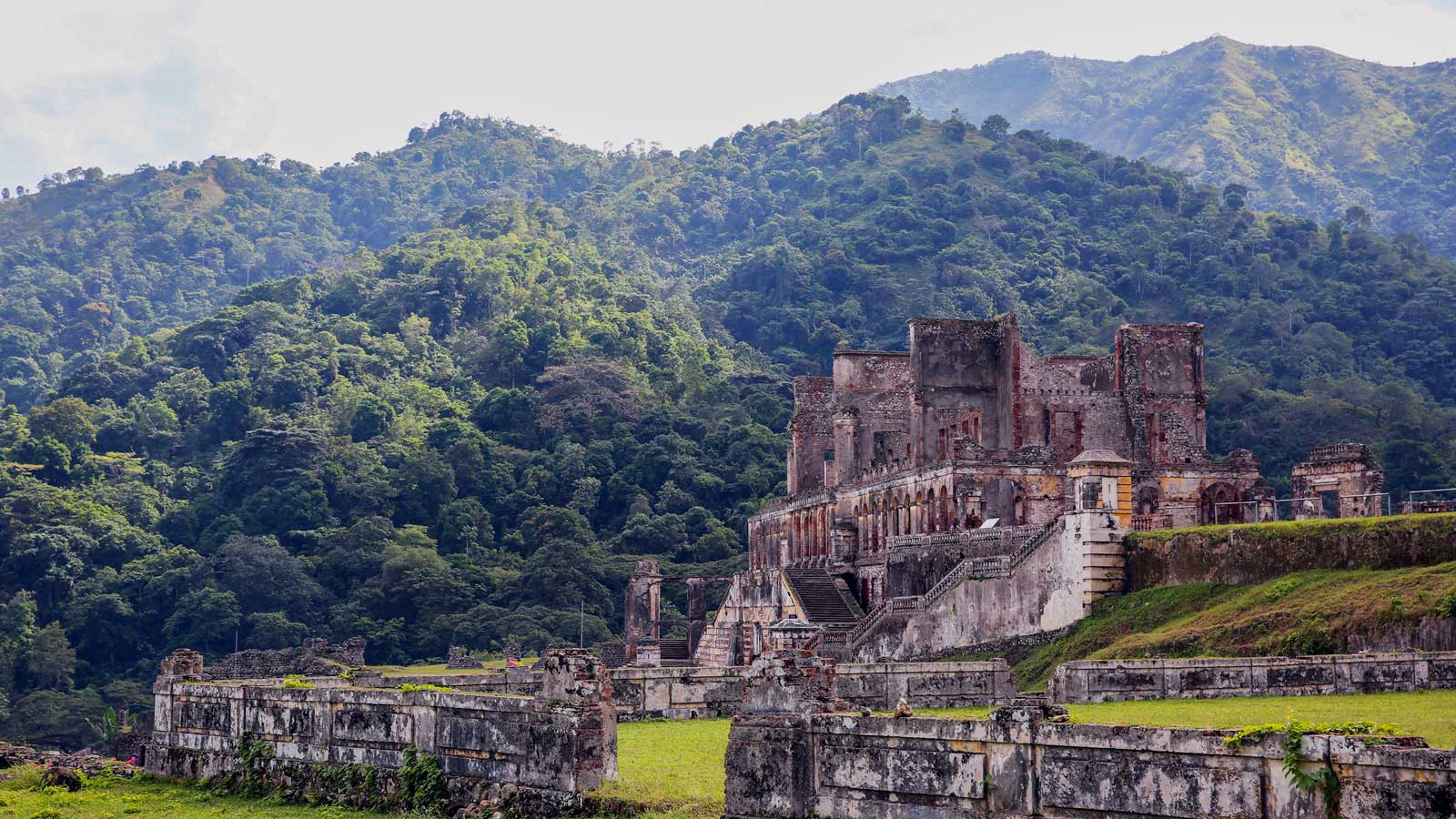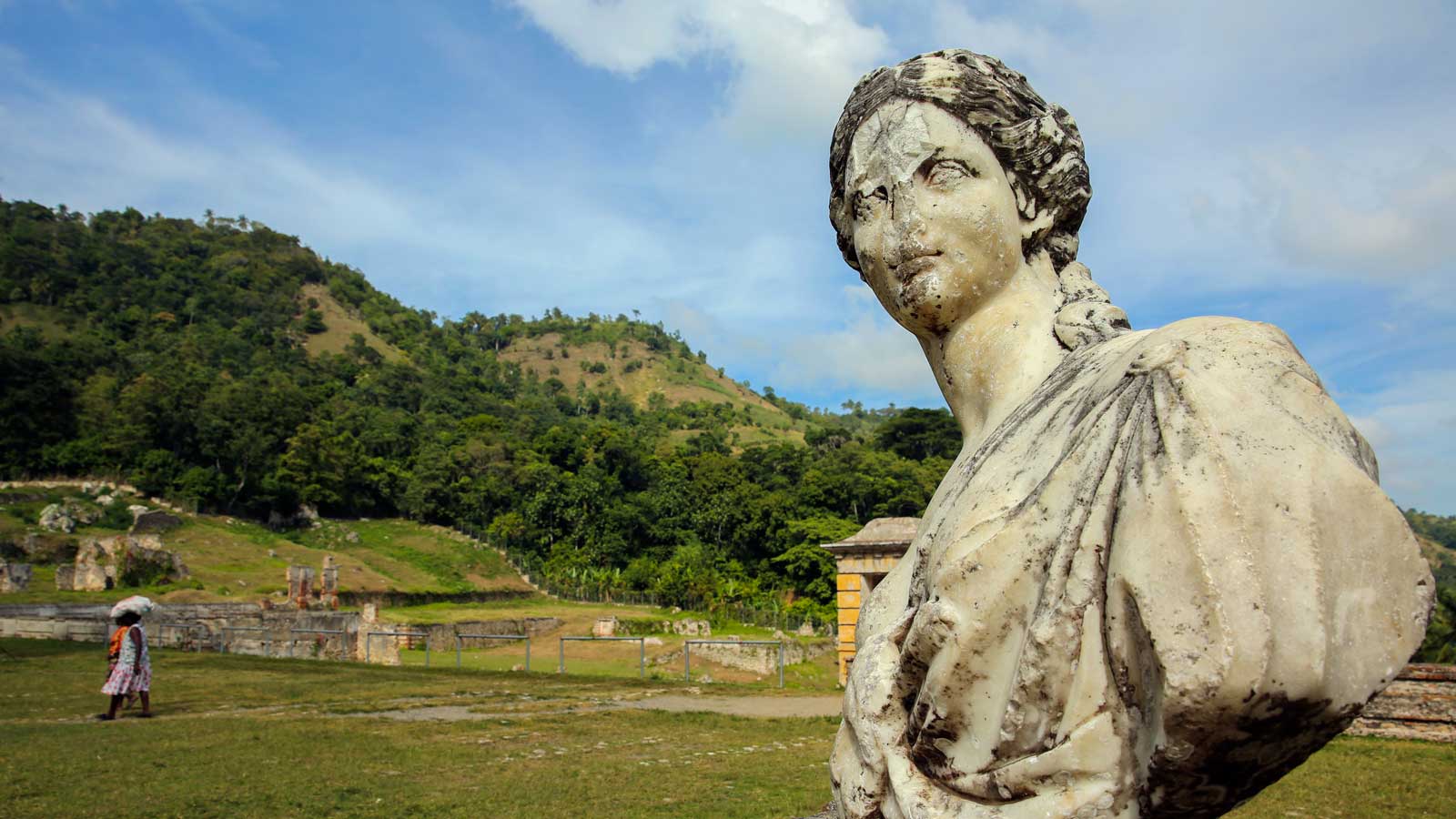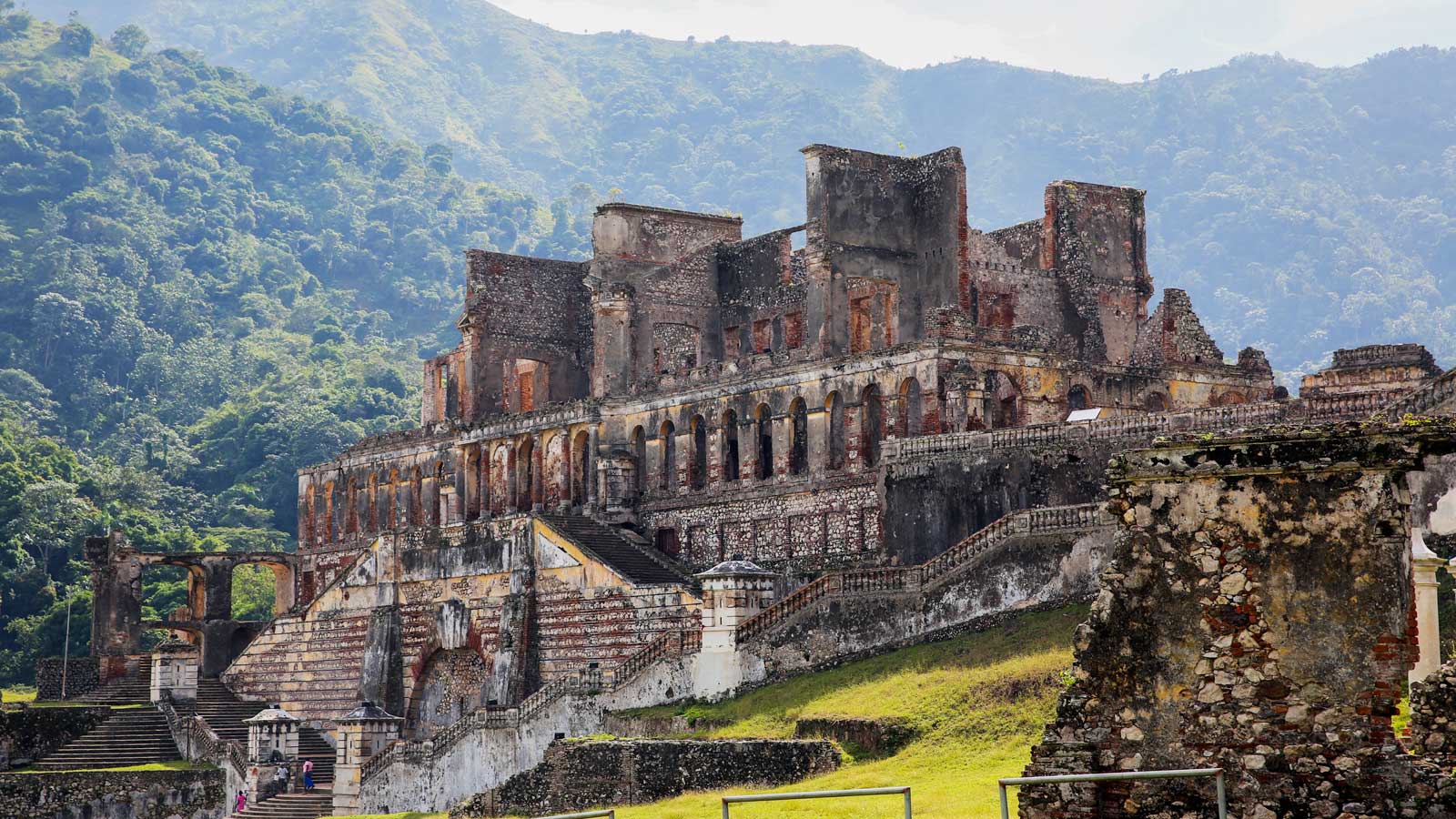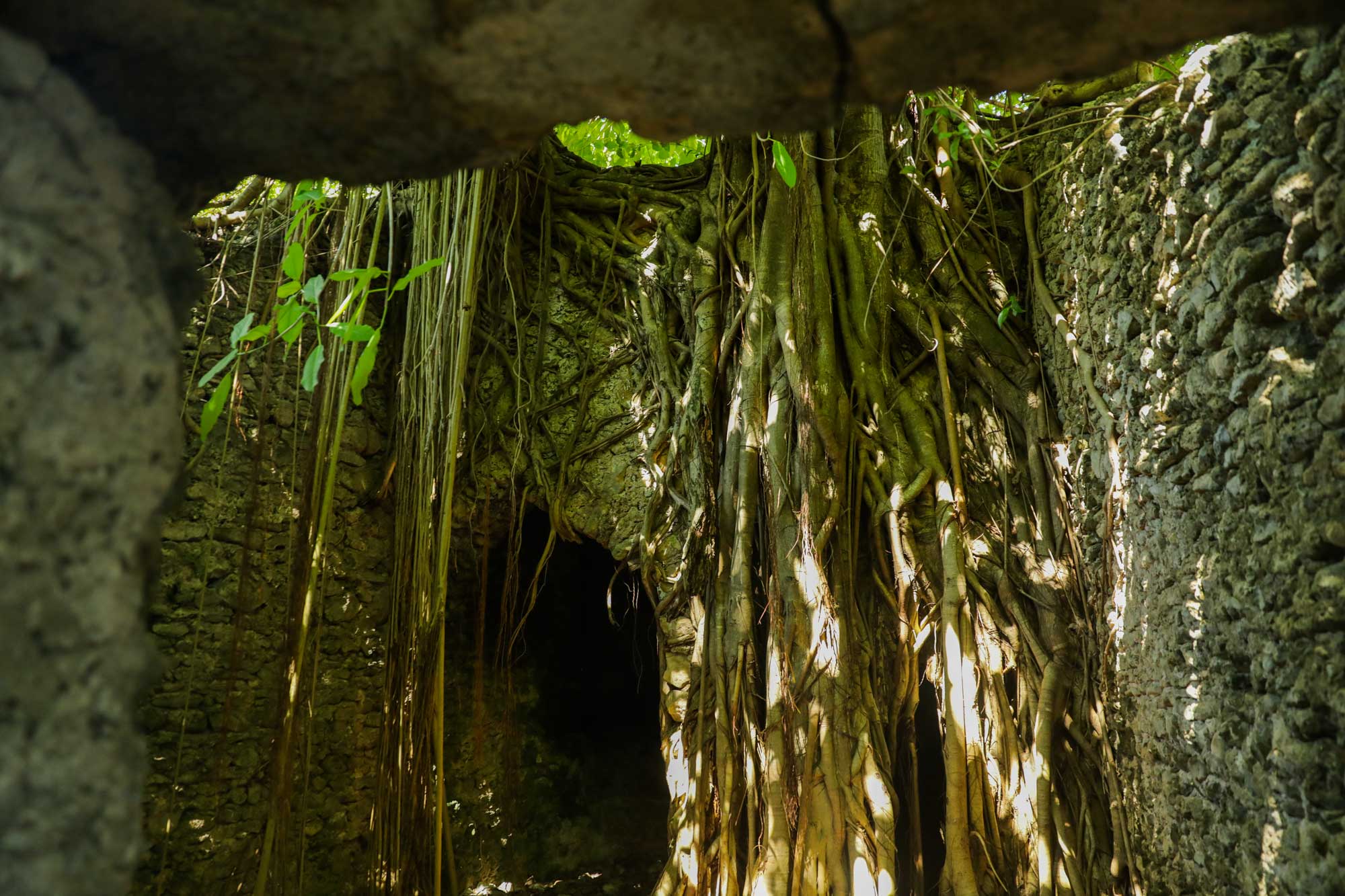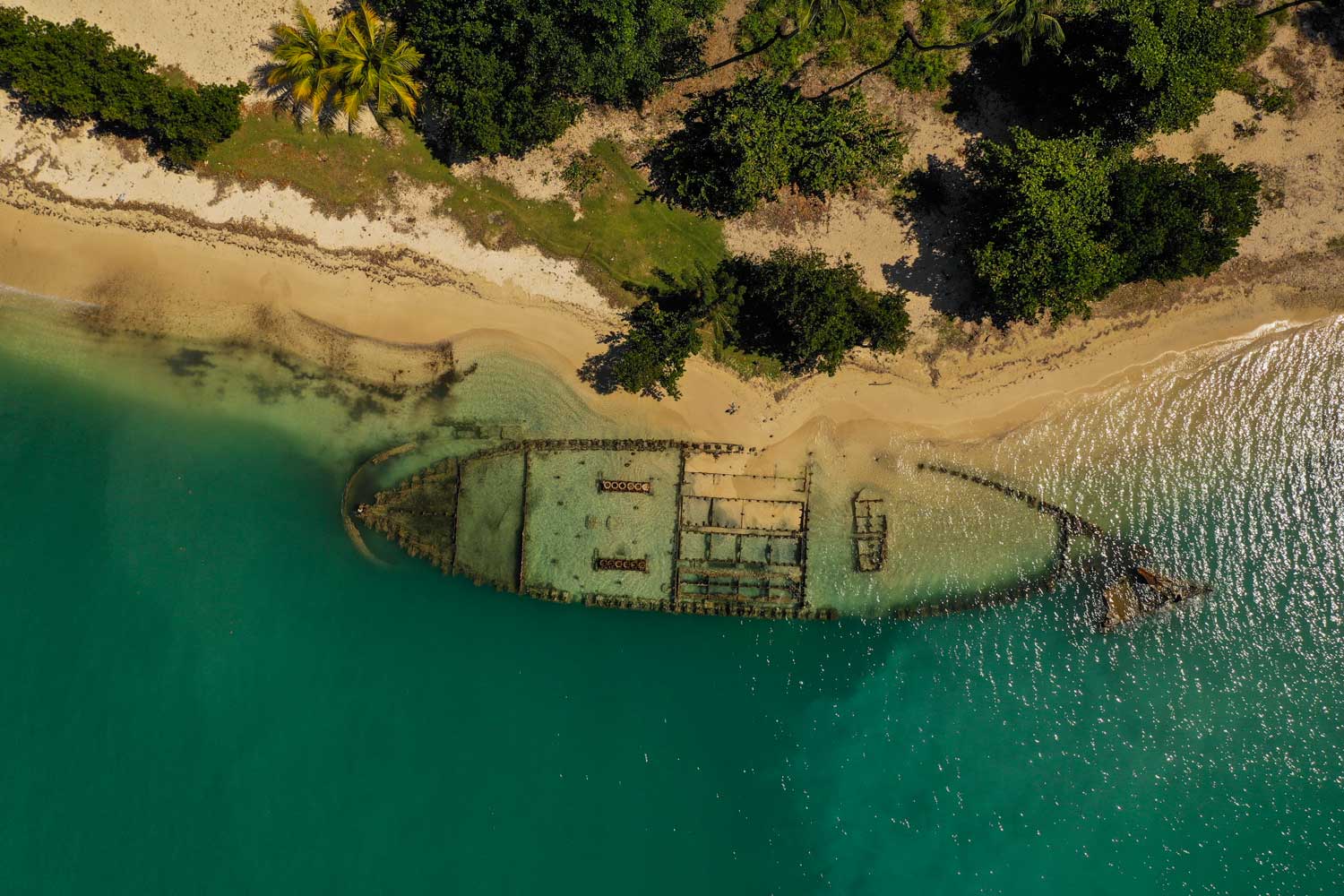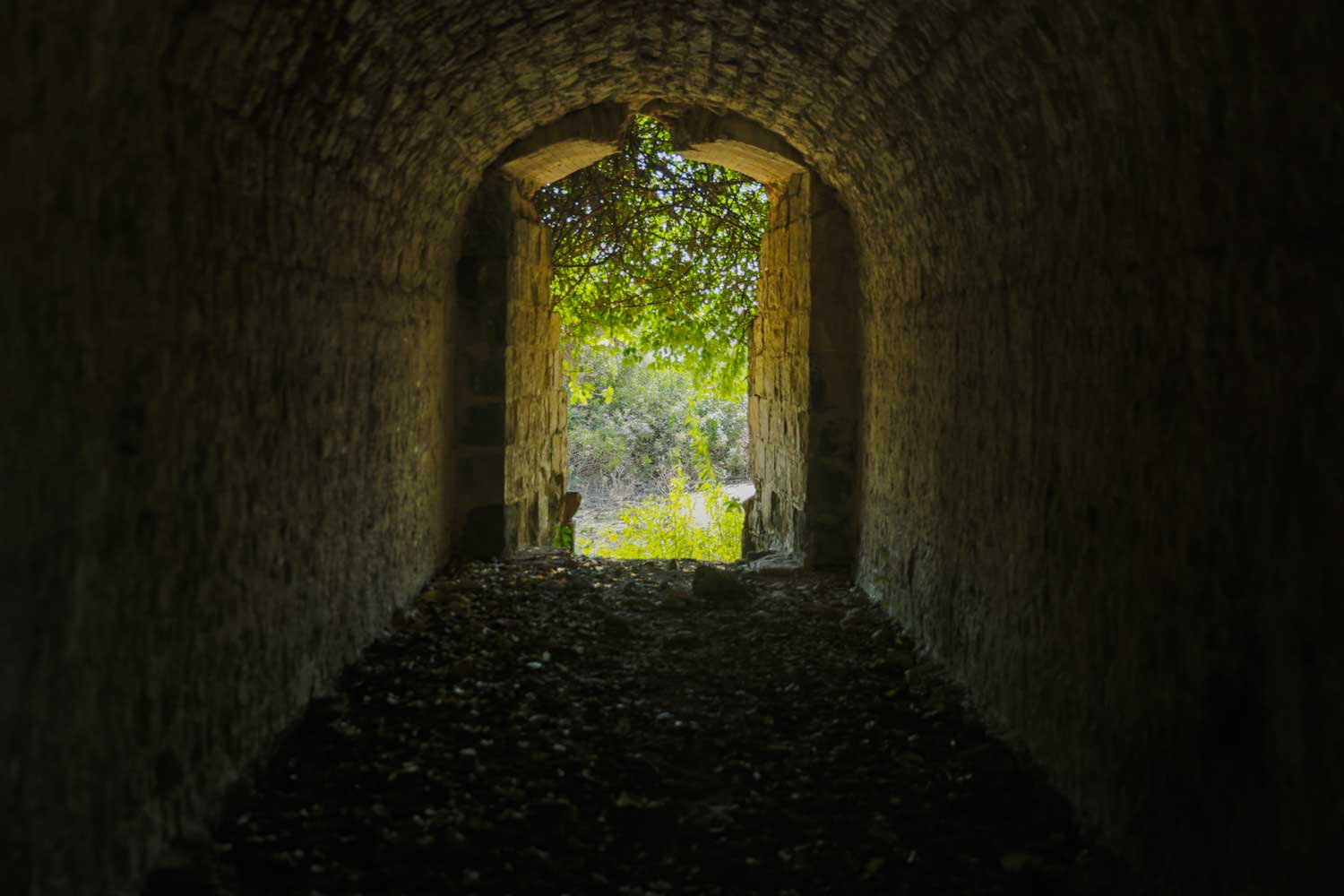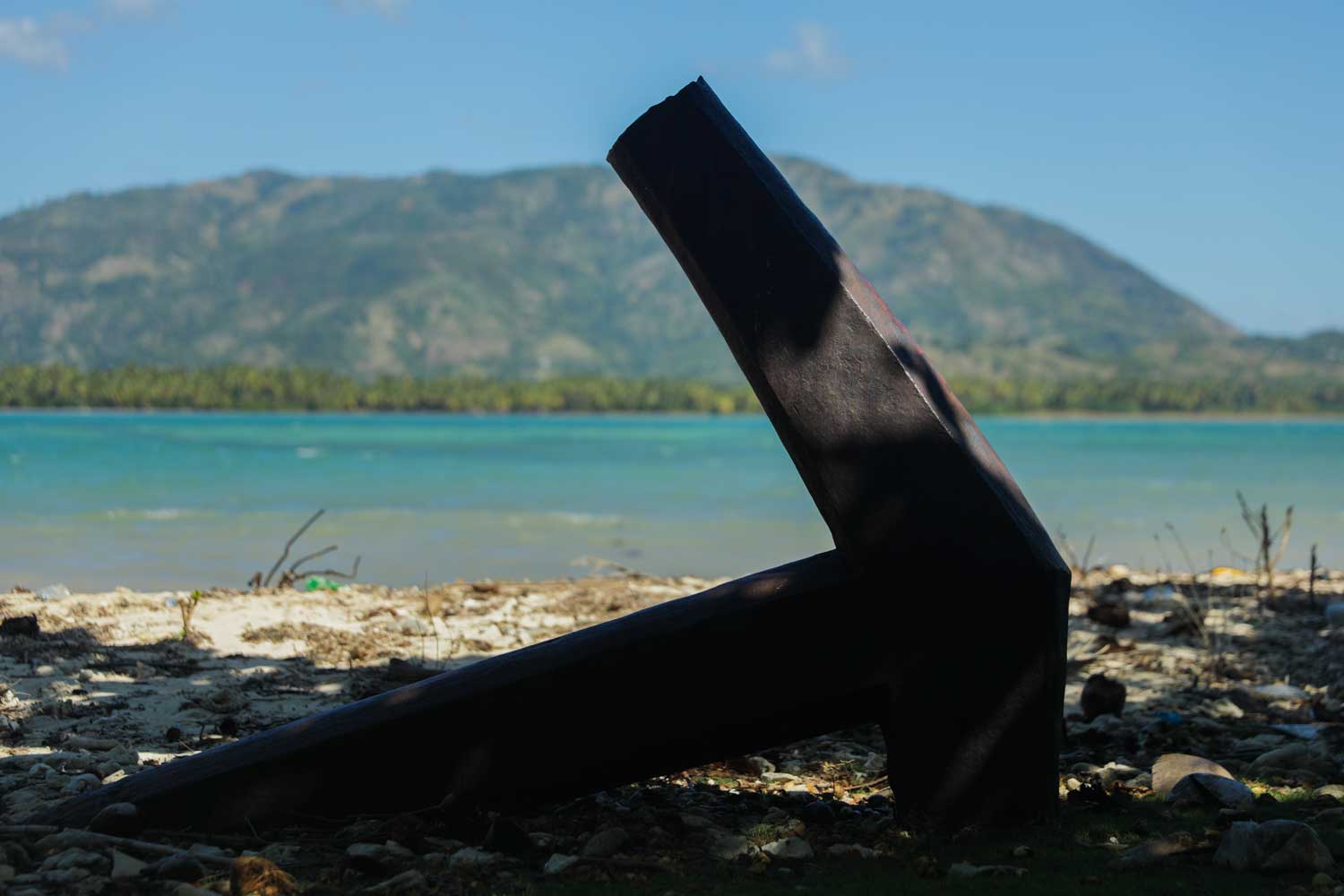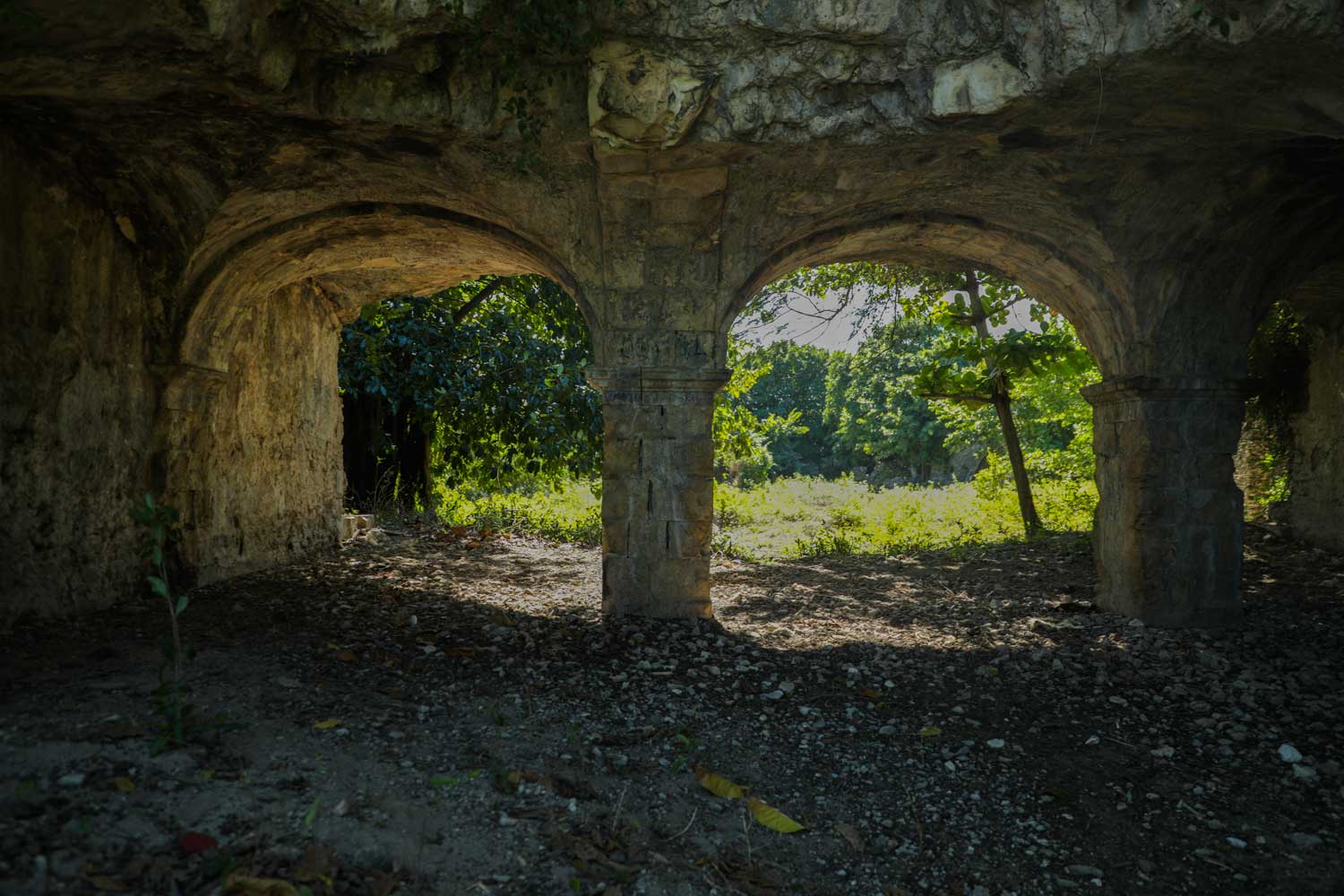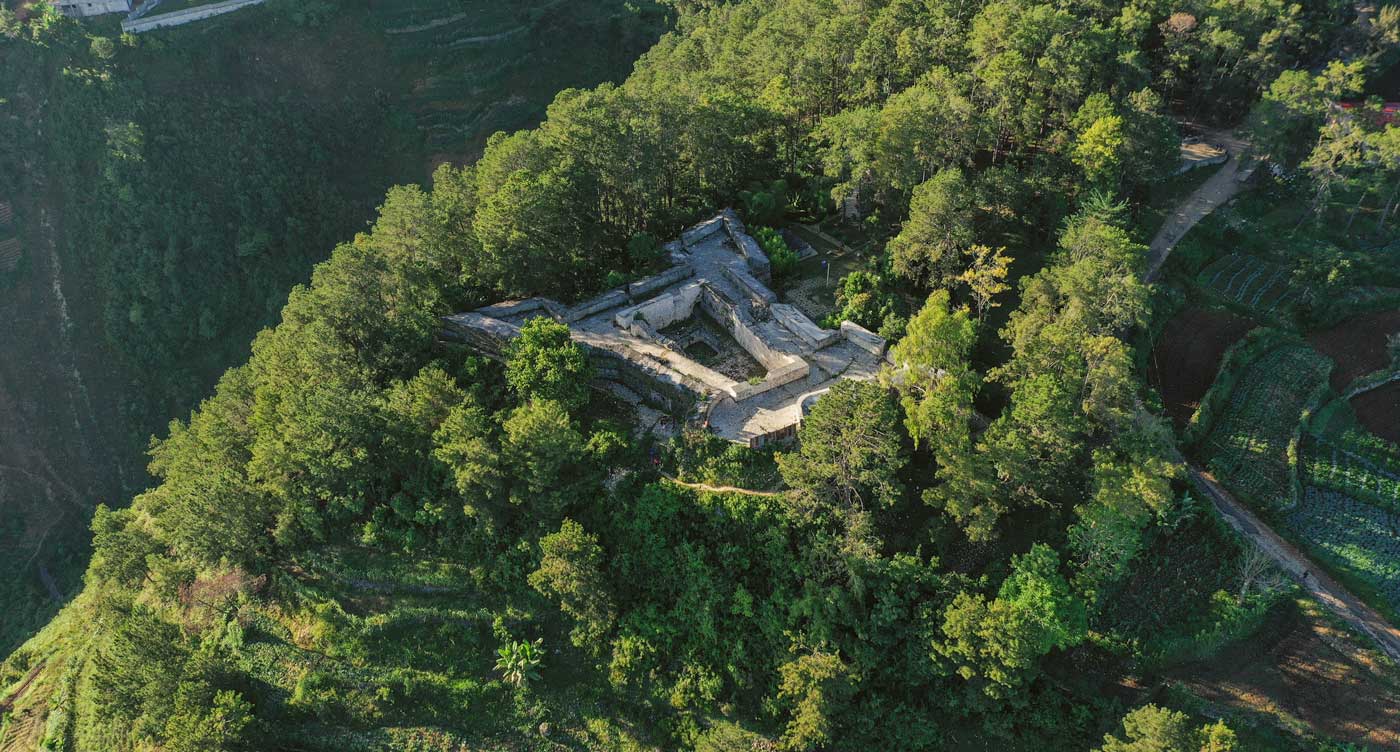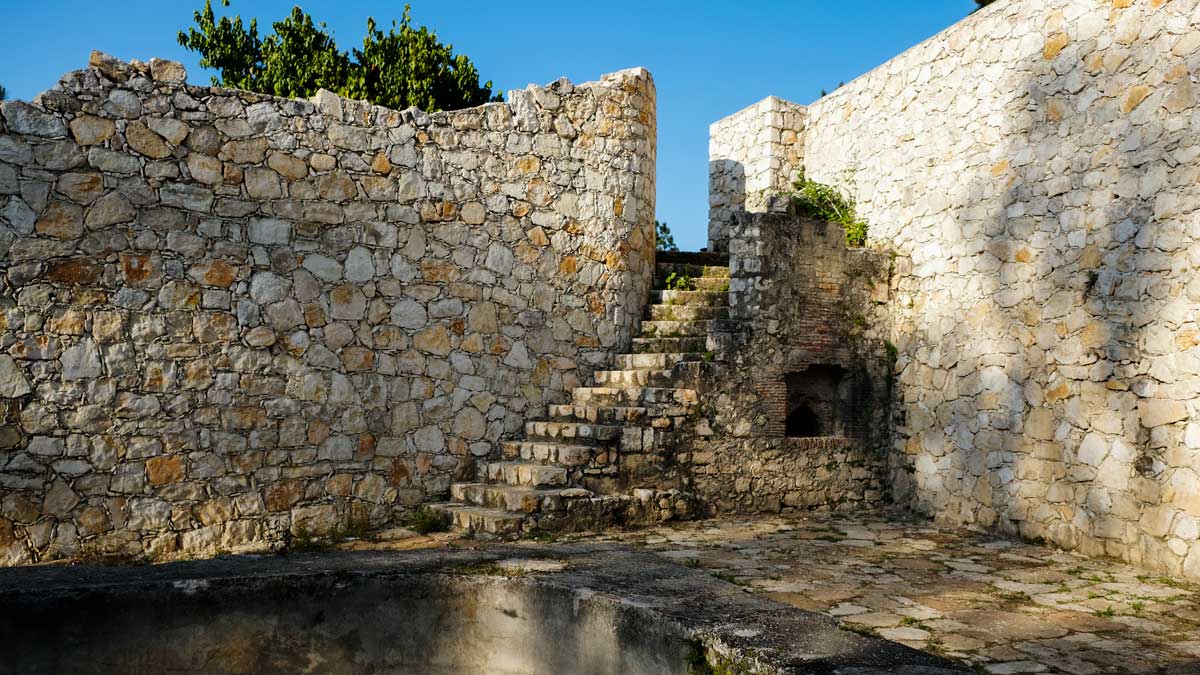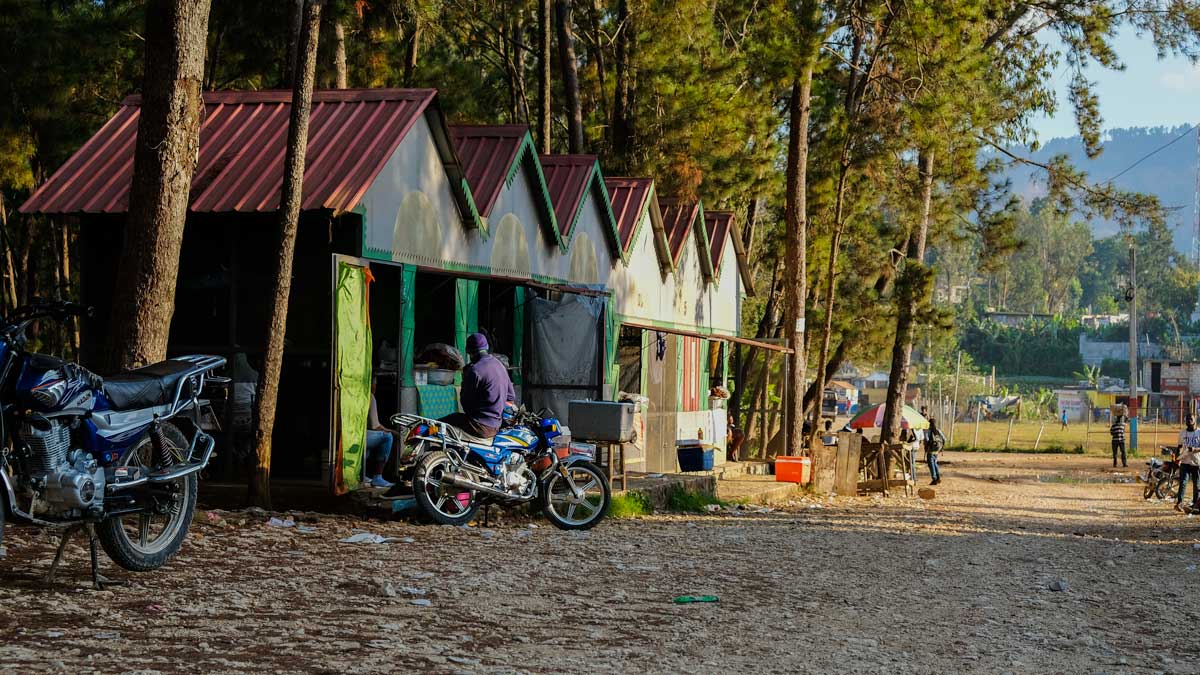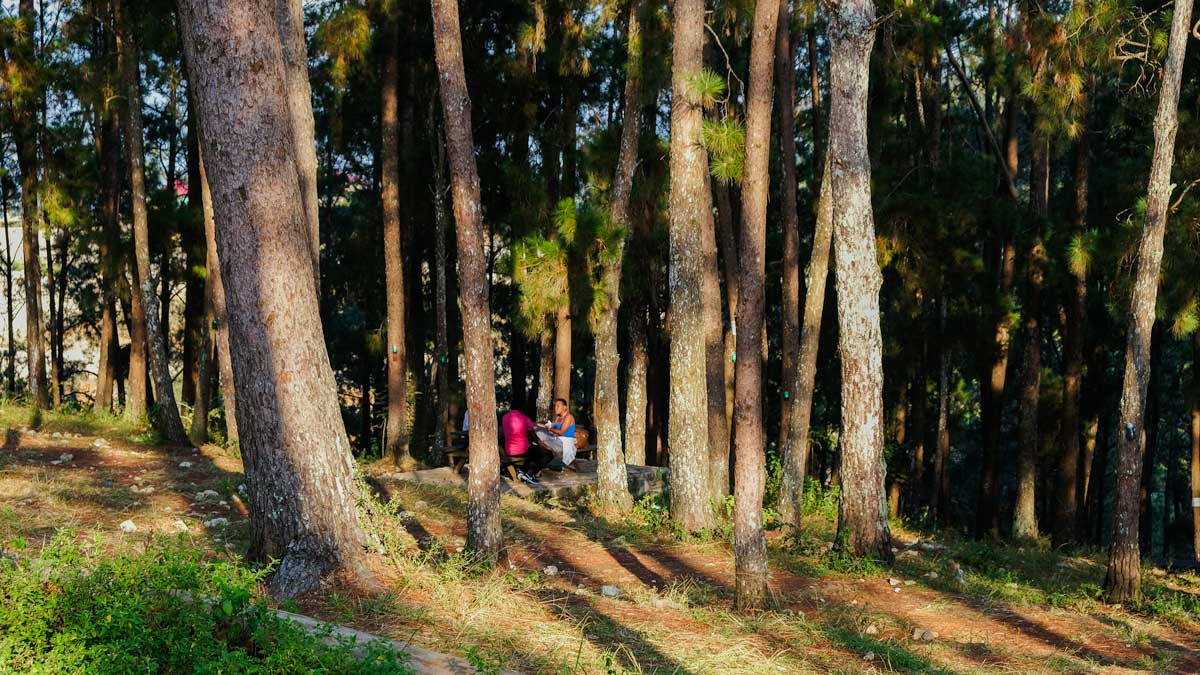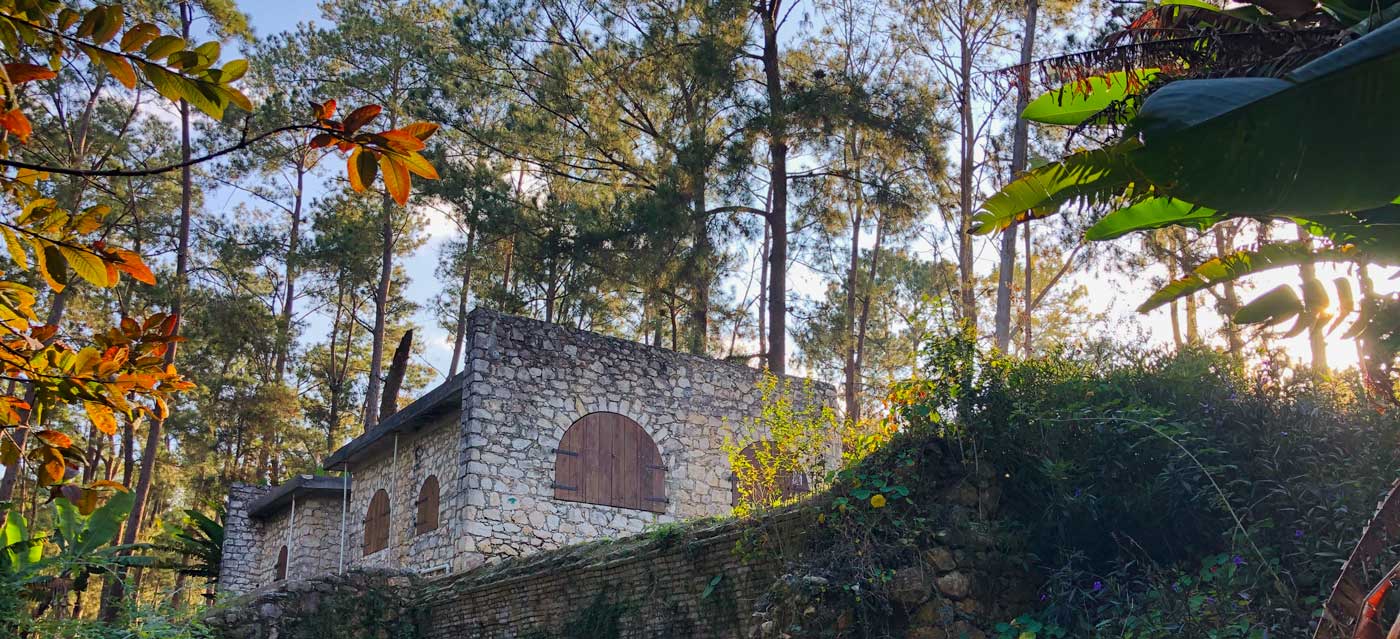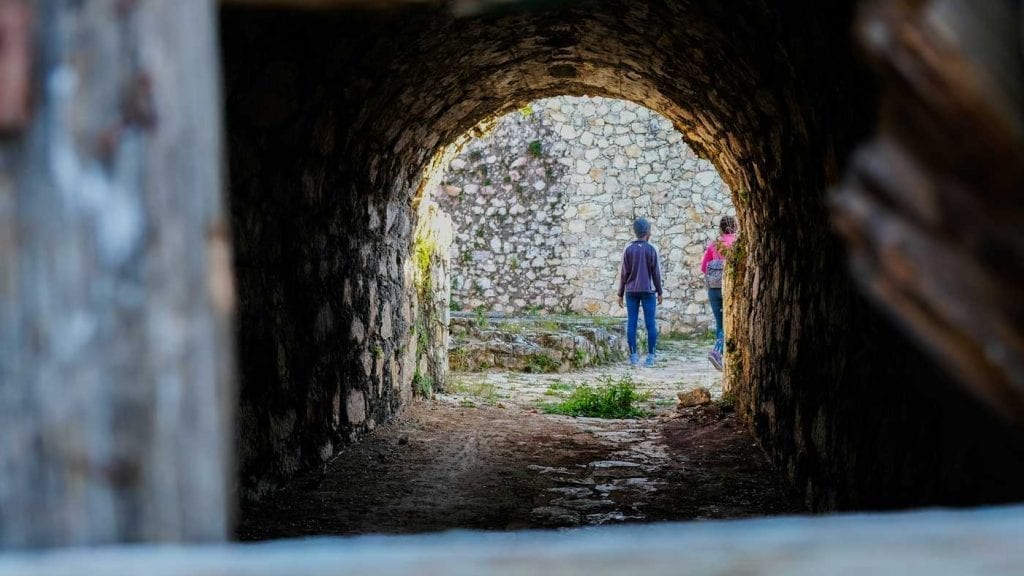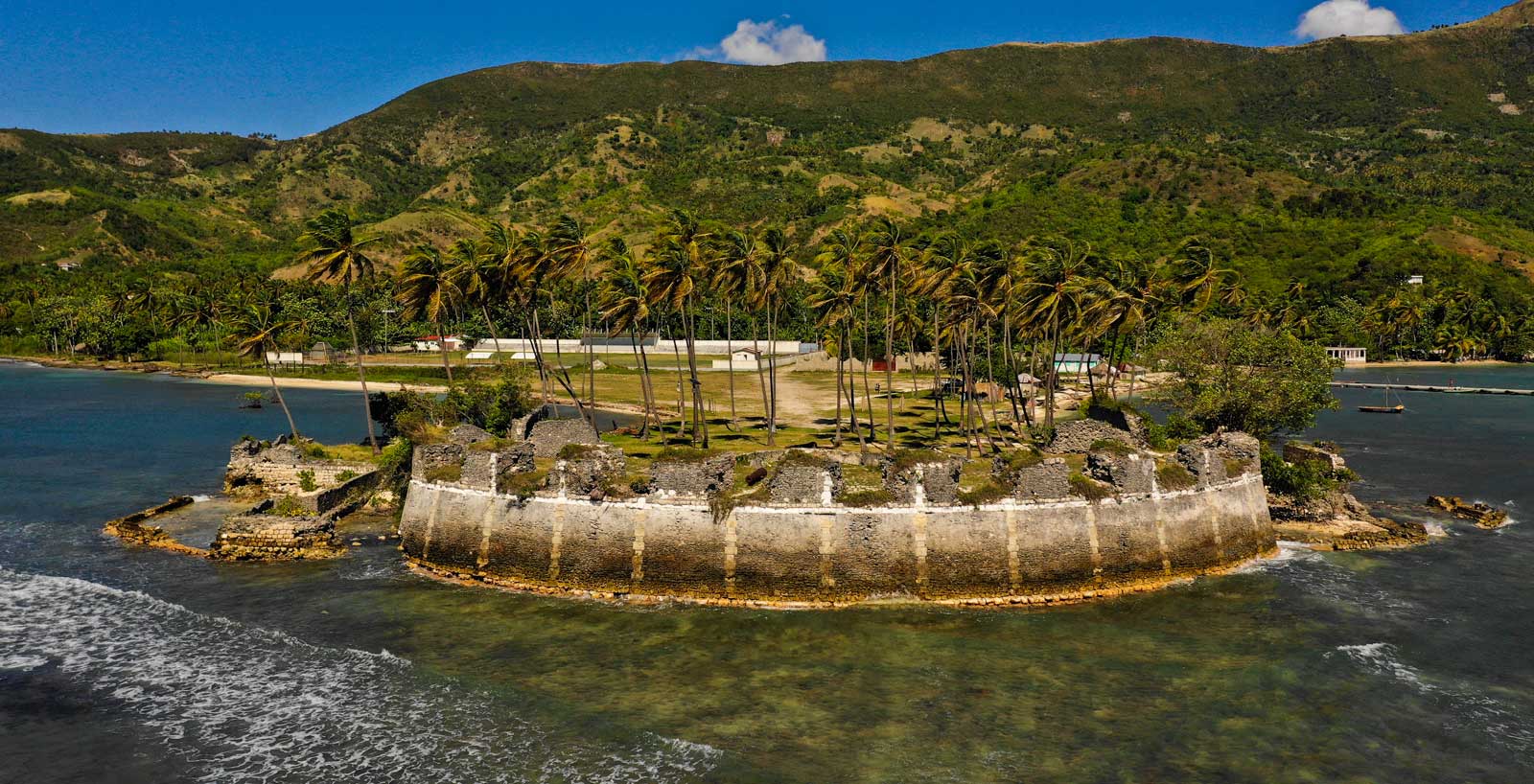
Photo: Mikkel Ulriksen
Fort des Oliviers Tells the Story of Haiti’s Colonial Past
Far from the crowds and deep in the south, Fort des Oliviers stands watch over the Bay of Saint-Louis. It’s one of the most striking and overlooked places to explore Haiti’s colonial past.
On a rocky peninsula just a short walk from Saint Louis du Sud, Fort des Oliviers dates back to the start of the eighteenth century.
A glimpse of the past
As you walk past cannons propped on stones, your mind will wander back to the time of double-breasted military uniforms and rifles. Staircases ascend and descend to the upper and interior levels of the fort – or the parts of it that have been preserved despite the elements. Wandering up the stairs, under archways and around the ancient artillery allows you to glimpse the experience of construction workers – both French and Haitian, who – more than three hundred years ago – put each of these stones into place.
Exploring the ruins of Fort des Oliviers, visitors can get a sense for the colonial era in which it was built. Three centuries have suffused the weathered walls of the fort with character. The stone has been softened and polished by the salt air and waves. Fort des Oliviers is as much a product of the coastal landscape as it is of those who built it.
If you are looking to deepen your understanding of Haiti’s colonial history, a visit to Fort des Oliviers is absolutely in order!
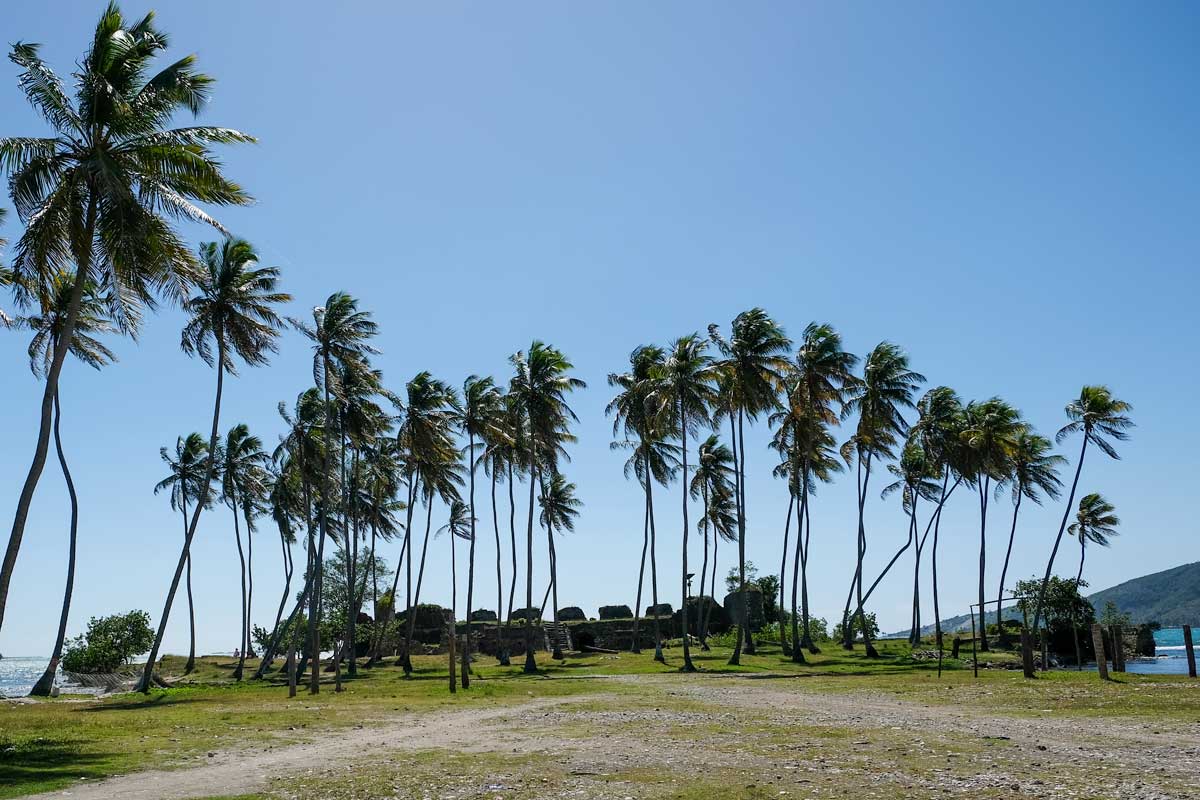
Photo: Franck Fontain
Steeped in history
Built in 1702, Fort des Oliviers was built by French occupiers to defend the Haitian territory against their colonial competitors – namely the British Empire. Unfortunately for the French, the British did indeed take over Fort des Oliviers about fifty years later, and established it as a pit-stop port for British ships to rest and refuel their crews.
Unlike Fort Ogé, Fort Jacques, or the iconic Citadelle Henri, which were built during Haiti’s revolutionary struggle for independence, Fort des Oliviers reflects an earlier chapter — one shaped by European rivalry, colonization, and imperial defense strategies along the southern coast.
The southern coastline of Haiti was hotly contested in the seventeenth and eighteenth centuries as a foothold from which to defend the country’s riches — a legacy that still shapes the southern region, home to coastal forts and a growing list of excursions and cultural activities in Les Cayes. Although modern Haiti is known for its pristine beaches, colonial-era Haiti made a name for itself in European cities through the high-quality goods brought back by traders returning from its shores. Fort des Oliviers was built just a few years after the French and Spanish divided up the island of Hispaniola into two separate countries – the Dominican Republic on the East and Haiti on the West.
The living heritage of relics like Fort des Oliviers make it impossible to separate the insistent natural beauty of the landscape from the history that has shaped modern Haiti as a living, breathing organism. This sense of identity and purpose is what drives the carnival attitude and lust for life that sets Haiti apart as one of the best places to visit in the Caribbean.
If you’re thirsty for more adventure, you’ll find another old fortress on an islet in the bay visible from Fort des Oliviers. This is Fort Saint-Louis, constructed at the same time as Fort des Oliviers. The islet is also home to an abandoned shipwreck famous among locals.
Fort Saint-Louis is accessible via a short boat ride from the coast.
Know Before You Go
Fort des Oliviers is completely free to visit — there are no fences, ticket booths, or entry fees. Though there’s no formal infrastructure, you won’t be on your own: local guides are usually available and will often approach you on-site. A tip of around 500 gourdes is a fair way to thank them for sharing the fort’s history and secrets.
Not sure how much that is in dollars, or what else to budget for? Read our guide to money and costs in Haiti.
The fort itself is weathered and crumbling, with restoration efforts halted since 2019. It’s generally safe to explore, but caution is advised near the edges, where the stonework has weakened over time.
There are no restrooms or vendors in the immediate area, but you may come across a young local selling fresh coconuts from the surrounding palm trees — 250 gourdes is a fair price. Don’t count on it, though, so bring your own water, sunscreen, and proper walking shoes. There’s good cell signal in the area, and the site is quiet enough to enjoy a picnic or a moment of peace under the sun.
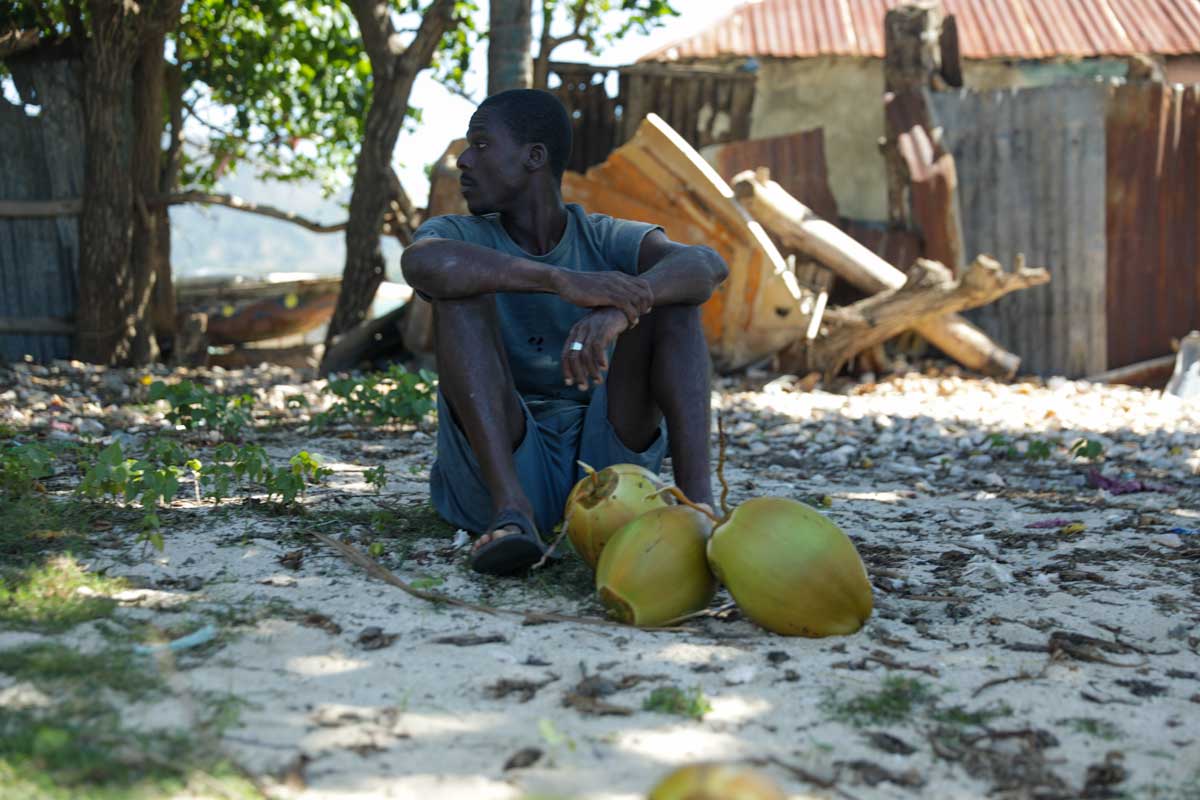
Photo: Mikkel Ulriksen
Getting there
Fort des Oliviers is a short walk from the township of Saint-Louis-du-Sud. While you’re in town, make a stop at the highway-side market to sample some of the area’s famous street food. If you only try one thing, look for the lady selling Lam Veritab Fri (fried breadfruit). Though it resembles fried plantain, the texture is very different — soft, starchy, and delicious. A cousin of jackfruit, breadfruit is best served piled high with a generous helping of spicy pikliz.
From the western edge of town, you can walk along the shoreline and over the palm-shaded peninsula that leads to the fort. The upper level of the structure offers flat, open spaces — perfect for sitting down to enjoy a picnic or simply disconnecting from the rush of city life. Just a stone’s throw away, you’ll find a quiet beach where you can dip your toes in the Bay of Saint-Louis.
For travelers arriving from farther away, Les Cayes is a 40-minute drive, while Jacmel is about four hours by road. As you approach the coast, keep an eye out for the islet in the bay — home to Fort Saint-Louis and a legendary shipwreck. Fort des Oliviers sits just opposite, nestled into the curve of the bay, easily visible from the shoreline.
Written by Kelly Paulemon.
Published October 2018.
Updated March 2025.
Find Fort des Oliviers
External Links
Read reviews of Fort des Oliviers on Trip Advisor

Explore more of Haiti’s history

Paradise for your inbox
Your monthly ticket to Haiti awaits! Get first-hand travel tips, the latest news, and inspiring stories delivered straight to your inbox—no spam, just paradise.






